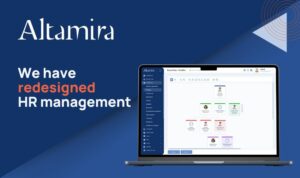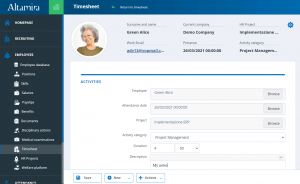Raghu Krishnaiah, Chief Operating Officer of the University of Phoenix, recently urged companies not to consider corporate training as a mere obligation to be fulfilled , but as a core process to be pursued with intent.
There is no shortage of arguments for what he is recommending. Both school education and company training are faced with the challenge of preparing students and workers for an increasingly dynamic world of work, where hard skills are updated at a fast pace and soft skills cannot be left out.
Workers, particularly millennials, seem to be well aware of the importance of training. In a Manpower study conducted in 25 countries, as many as 93% of the 19,000 interviewees said that they considered the constant development of their skills essential for their career.
In addition, the training opportunities offered by a company have become an important factor in the choice of a workplace for 80% of the participants in the same study. This is confirmed by a survey conducted by Gallup, which shows that for 59% of millennials, the opportunities for growth and learning being offered are extremely important when it comes to submitting a job application.
Thus, company training has become a tool for:
- Developing internal skills, resulting in more competent workers who are able to keep pace with changes (in technology, processes, best practices, etc.).
- Improving employer branding and attracting the best talent.
- Stimulating engagement and reducing turnover rate.
- Ensuring compliance with regulations and workplace safety.
Despite all these facts, investment in corporate training is still at a low level.
This certainly has something to do with our low propensity for medium- and long-term planning, and budgets that are always tight—especially in the realm of SMEs. But another factor holding companies back is the difficulties in calculating the contribution of training to the company’s business. Among the areas covered by HR management, training is in fact one of the least digitized—an area in which the use of Excel spreadsheets and other obsolete tools still prevails, which do not allow such analysis and correlations.
Digitalizing training using modern software allows one to streamline processes, preserve history and track specific KPIs. Using tools such as the balanced scorecard, it is also possible to measure the impact of training processes on other company indicators.
Let’s see some examples of KPIs related to training and metrics influenced by it.
Training KPIs
- Cost of training per employee. The average investment of the company for the training of an employee is the first indicator one should start from in order to evaluate the effectiveness of the training plan.
- Course attendance rate. Calculating a real ROI for training is not easy, but we should at least track how active employee participation is in the company’s training courses.
- Training effectiveness. The effectiveness of training can be monitored through employee surveys. In this way, we will make sure that the courses they’ve taken have been helpful in improving their productivity.
- Skills gap. This is an essential KPI to calculate the gap between the actual skills of the staff and the level they should attain in order to fulfill their role in the best way.
KPIs influenced by training
- Rate of adoption of IT tools. A useful metric to verify whether the training provided for the software that has been introduced by the company has led to a high rate of adoption.
- Internal promotion rate. This is calculated by dividing the number of people promoted by the total number of employees, and is a useful indicator for retention capacity. A high promotion rate is an indication of training activity that develops employees’ skills and prepares them for growth in the company.
- Sentiment Analysis. This is calculated by monitoring employees’ opinion about the company, thanks to the reviews on portals such as Indeed and Glassdoor. A good training plan will increase the level of satisfaction of the staff, an important factor in employer branding.
- Voluntary turnover rate. Investment in training can reduce the number of annual resignations.
- Employee satisfaction survey. The best way to calculate the employee satisfaction rate is to ask them to fill out an anonymous questionnaire. One of the most used KPIs is the Net Promoter Score. It is measured by asking employees how strongly they would recommend their company as a workplace, on a scale of 1 to 10. This can give useful information about the extent to which a new training plan has been well received.
Conclusions
Training is more fundamental for the success of a company than ever before.
Thanks to digitalization, the right tools exist to optimize its efficiency, monitor its results and turn it into an organic part of the company’s business.
Thus, it is necessary to go beyond providing mandatory courses, which are useful for avoiding fines but offer little added value, and put training at the center of your company processes.
Such investments will certainly pay off in the medium and long term.
Copyright: ©small smiles/Adobe Stock




























































































